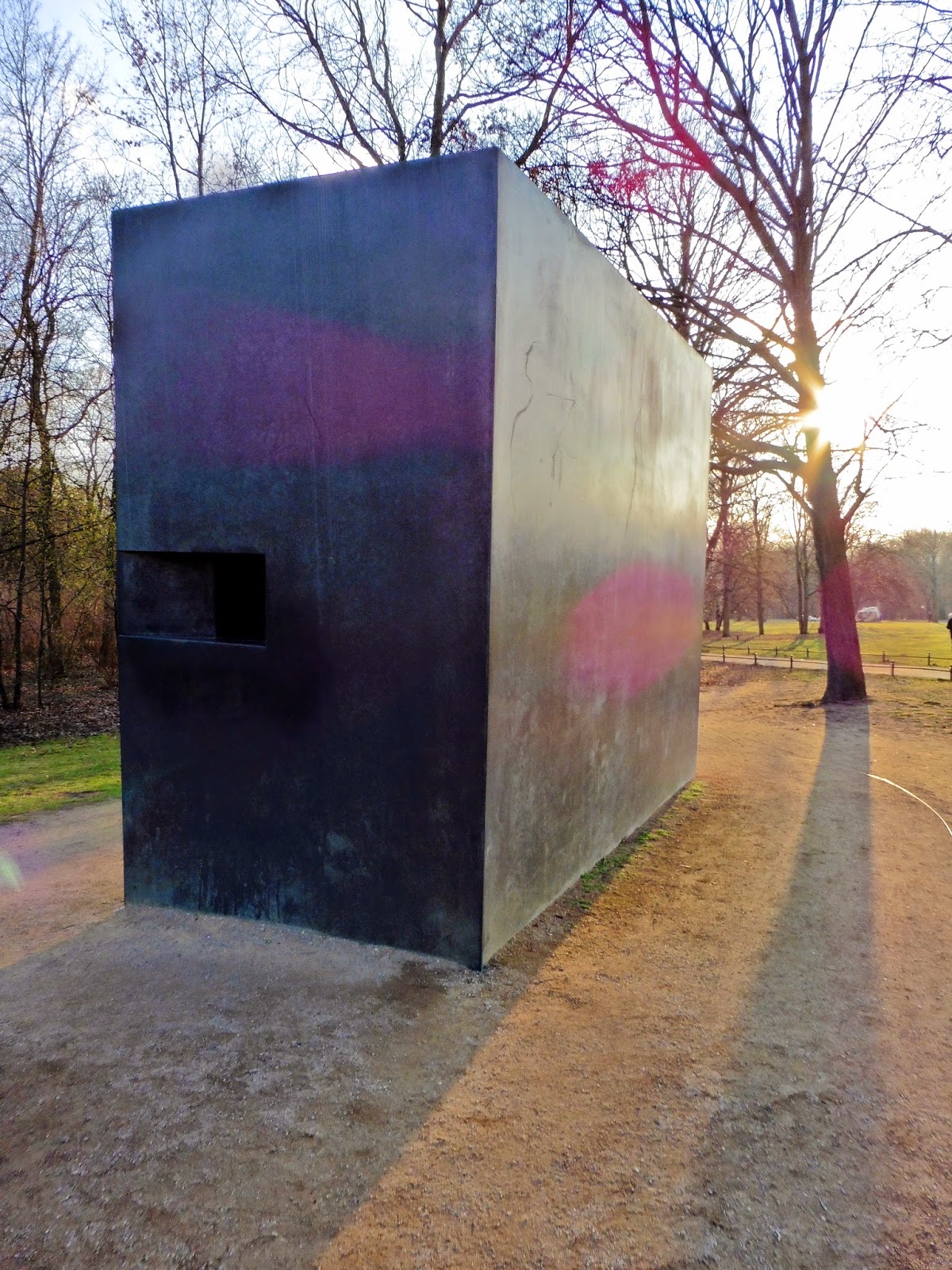Memorials to Holocaust Victims Berlin
>> Wednesday, April 29, 2015
There are 3 memorials very close to each other that we went to see.

It is in the Tiergarten very close to the Brandenburg Gate. The description is "A site for inner sadness. a site for feeling pain, for remembering and not letting the annihilation of the Sinti and Roma by the National Socialist regime fall into oblivion"
I found it a rather peaceful place, rather than painful. Quiet except for gentle violin music. The still looking glass water reflecting the trees around, but it represents a deep black pit and tears, the stone sinks and rises and a flower placed on it everyday, to remember anew - forever.
There were 500,000 people persecuted as Gypsies.
The Memorial to the Murdered Jews of Europe was opened in 2005. It is close to the Brandenburg Gate on the American Embassy side. Give yourself at least an hour to walk around it inside and out. (Children under the age of 14 are not allowed inside.)
It is free to visit but visitors are allowed in only a few at a time, we queued for about 10 minutes on a Friday afternoon in March.
We approached from the Tiergarten so the first of the 2711 concrete blocks started off small, like tombstones.
As we walked in they got bigger.
All encompassing.
Until it was huge and there was a realisation we could lose each other in it. Dark, looming, bigger than us, lost.
6 million Jews lost.
A clever, thought provoking design.
There is a lot to see inside.
I found the Room of Dimensions the most interesting. Letters and last notes of victims, added to by the number of deaths shown around the walls.
The stones from above were reflected in the ceiling. It was engulfing.
The Room of Families was also very interesting to read. It turned numbers into people, destruction of families and the hope of seeing some with survivors.
There was a room with sound tracks, a room with map displays showing the sites...I spent a long time looking at that, surprised where there were gaps, reasoning it out to myself with my limited knowledge of geography, history and religious movement of different people across the years.
There are interactive databases to look up names of victims if you have a connection and want to do individual research.
The displays are laid out in German and English with the English text being as big and clear to read. Even the audio was repeated in English after the German. (I was amazed at how little German I needed to understand anywhere in Berlin.)
There is an audio guide available at a cost of 4 euros.
You will go through a security check to get in, but it's ok to have liquids. There are also toilets as soon as you get inside. You can take photos as long as you don't use a flash.
At the Memorial of the Sinti and Roma
Auschwitz
Sunken in face
extinguished eyes
cold lips
silence
a torn heart
without breath
without words
no tears
Santino Spinelli (Italian Roma)













0 comments :
Post a Comment